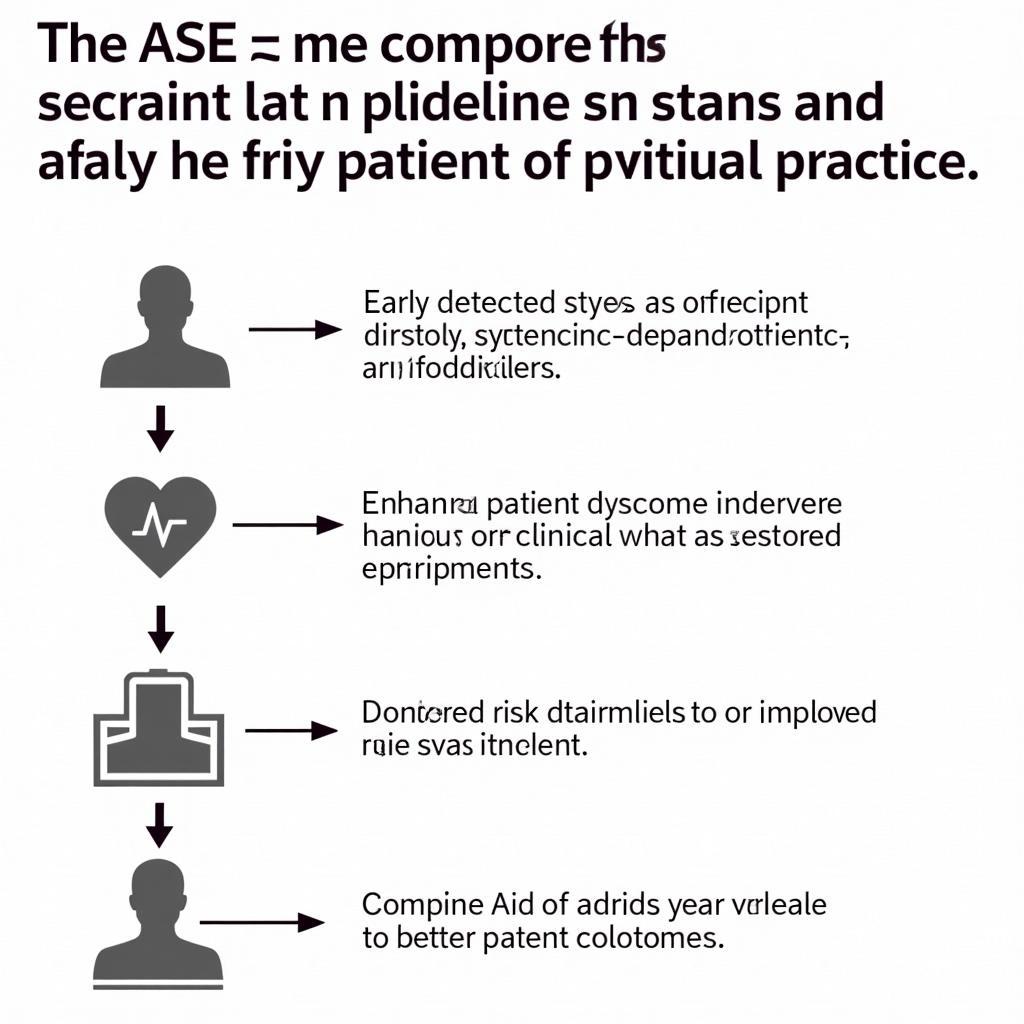The year 2016 saw significant updates to the American Society of Echocardiography (ASE) guidelines concerning echocardiography, particularly in the assessment of diastolic function. These guidelines provide a framework for healthcare professionals utilizing echocardiography, ensuring accurate diagnosis and effective management of various cardiovascular conditions.
Understanding the Importance of ASE Echocardiography Guidelines
Echocardiography plays a crucial role in diagnosing and managing heart conditions. The ASE guidelines offer standardized protocols and interpretations, allowing for consistency and accuracy in echocardiographic assessments. The 2016 updates were particularly noteworthy for their focus on diastolic function, a critical aspect of heart health that can be challenging to evaluate.
Key Changes in the 2016 ASE Guidelines for Diastolic Function
The 2016 guidelines brought about several key changes in how diastolic function is assessed through echocardiography. These changes aimed to improve the accuracy and reliability of diagnosing diastolic dysfunction, a condition that can lead to heart failure and other complications.
Some of the notable changes included:
- Revised Normal Values: The guidelines introduced new normal values for various echocardiographic parameters used to assess diastolic function, such as the E/A ratio, E/e’ ratio, and left atrial volume index. These updated values helped in improving the sensitivity and specificity of diagnosing diastolic dysfunction.
- Emphasis on Multi-Parameter Approach: The 2016 guidelines emphasized a comprehensive evaluation of diastolic function using multiple echocardiographic parameters rather than relying on a single measurement. This approach allowed for a more accurate assessment of diastolic function and helped in better characterizing the severity and type of dysfunction.
- Grading System: A new grading system for diastolic dysfunction was introduced, providing a standardized way to classify the severity of the condition. This grading system aided in risk stratification and guided treatment decisions.
Implications for Clinical Practice
The 2016 ASE echocardiography guidelines significantly impacted clinical practice, leading to:
- Early Detection of Diastolic Dysfunction: The updated guidelines and the emphasis on a multi-parameter approach enabled earlier detection of diastolic dysfunction, even in asymptomatic individuals.
- Improved Risk Stratification: The new grading system facilitated better risk stratification of patients with diastolic dysfunction, allowing healthcare providers to tailor treatment plans based on the severity of the condition.
- Enhanced Patient Management: By providing clear and standardized guidelines for echocardiographic assessment, the 2016 update contributed to improved patient management and outcomes.
 Impact of the 2016 ASE Guidelines on Clinical Practice
Impact of the 2016 ASE Guidelines on Clinical Practice
Accessing the 2016 ASE Echocardiography Guidelines
The 2016 ASE guidelines are an essential resource for cardiologists, sonographers, and other healthcare professionals involved in cardiovascular care. You can access the complete guidelines and supporting documents on the American Society of Echocardiography website.
ase 2016 diastolic guidelines citation
Conclusion: The Enduring Relevance of the 2016 ASE Guidelines
The 2016 ASE echocardiography guidelines represented a significant advancement in the field of cardiovascular imaging. By providing updated recommendations and a standardized approach to diastolic function assessment, these guidelines continue to shape clinical practice and contribute to improved patient care.
For healthcare professionals, staying abreast of these guidelines is paramount to ensure accurate diagnoses, effective treatment strategies, and optimal outcomes for patients with cardiovascular conditions.


